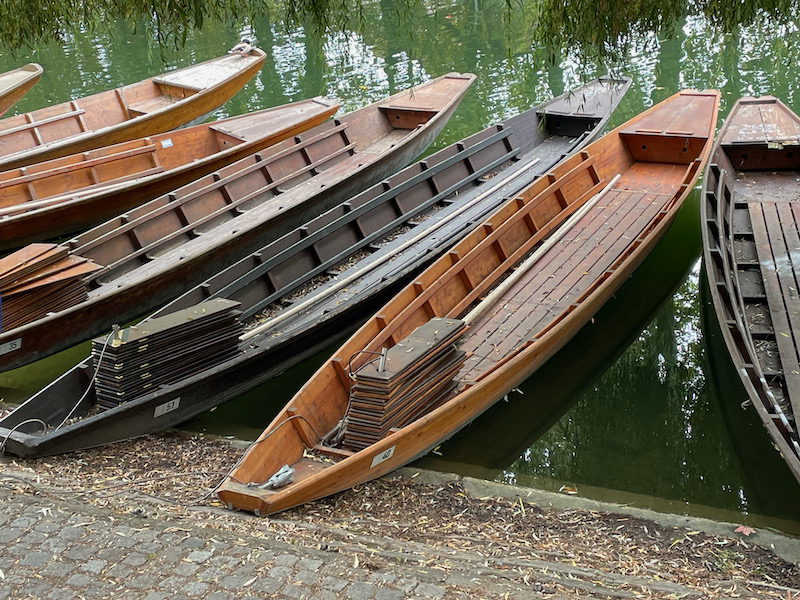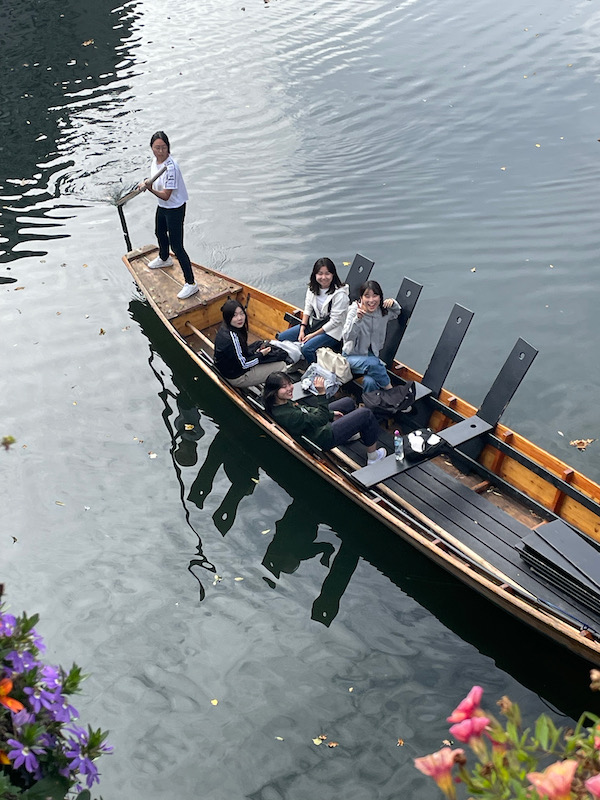Our Blog - Germany 2023 - Tübingen, Germany
Tübingen is a traditional university city about 20 miles south of Stuttgart. It has a population of about 90,000 but a whopping 30% of the population are students, making it also the city with the lowest median age in Germany. Tübingen first appears in official records in 1191. The local castle, Hohentübingen, has records going back to 1078, when it was besieged by Henry IV, king of Germany. In 1789, parts of the old town burned down, but were later rebuilt in the original style. Under the Nazi's, the synagogue here was burned on Kristallnacht in 1938 but it remained largely undamaged during WWII, mainly because it was occupied by the French army and became part of the French zone of occupation.
They had a nice brochure with a walking tour that took us around the Old Town. The city is built on both sides of the Neckar River. As we crossed over the bridge, there is an island that has plane trees, planted in 1828, that form an avenue. You can also see the lovely late medieval and Renaissance buildings.
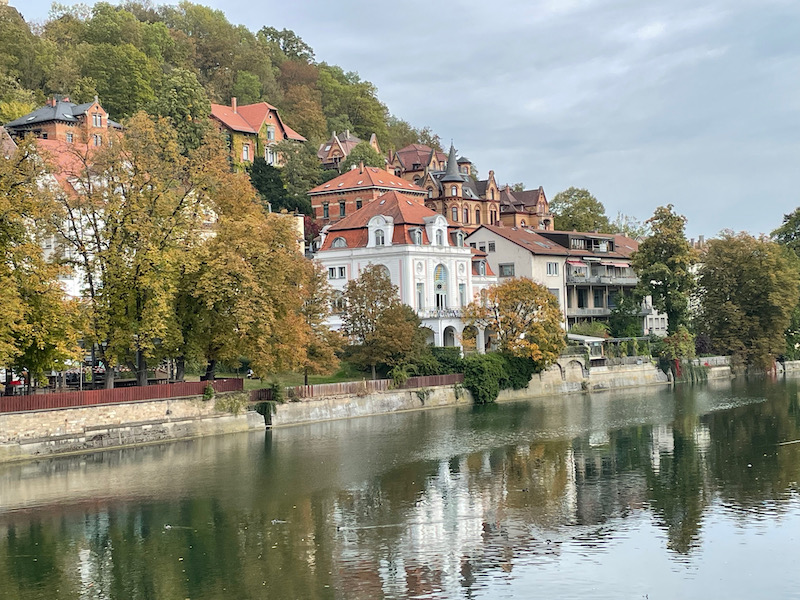
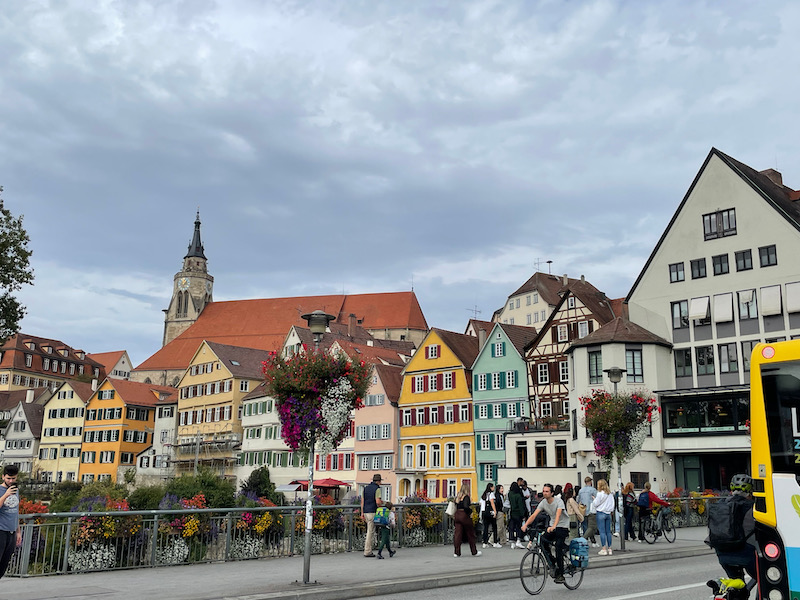
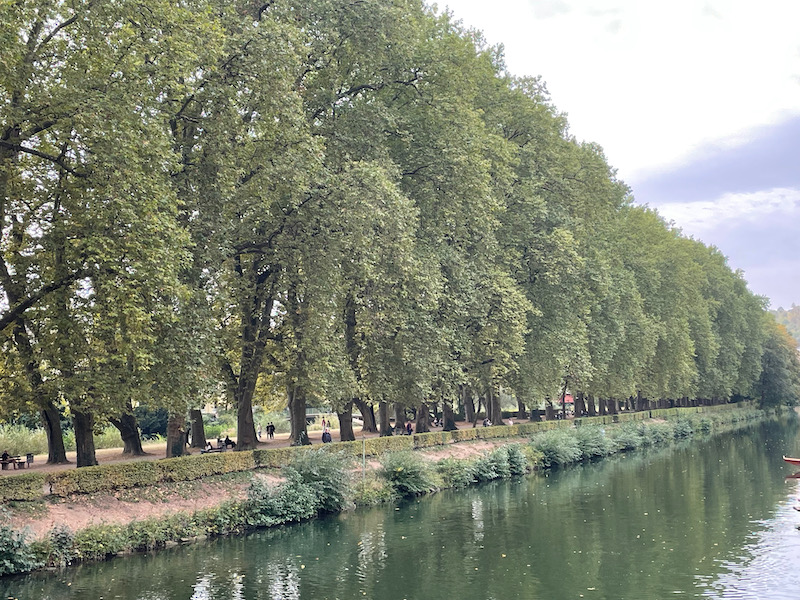
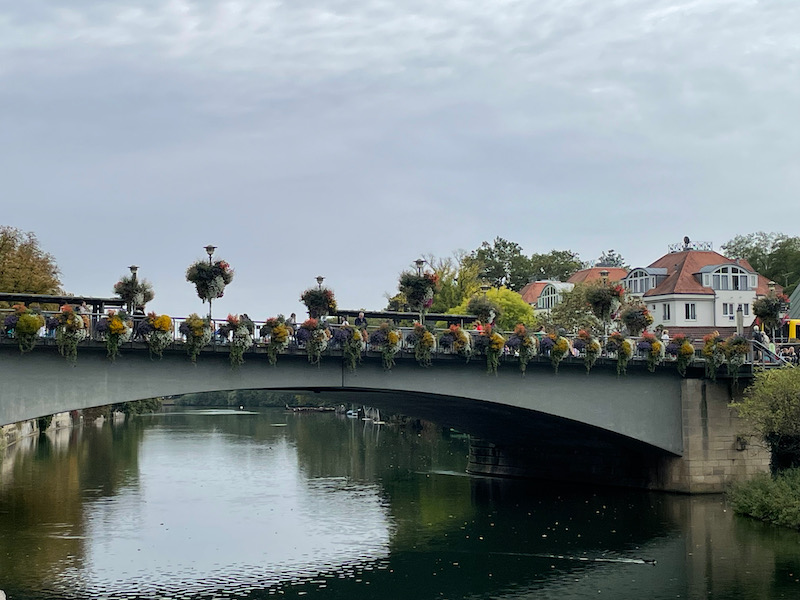
We strolled along the river until we got to this yellow tower, called the Hölderlin Tower. The building (and tower) now houses a museum dedicated to German poet Friedrich Hölderlin (1770-1843)).
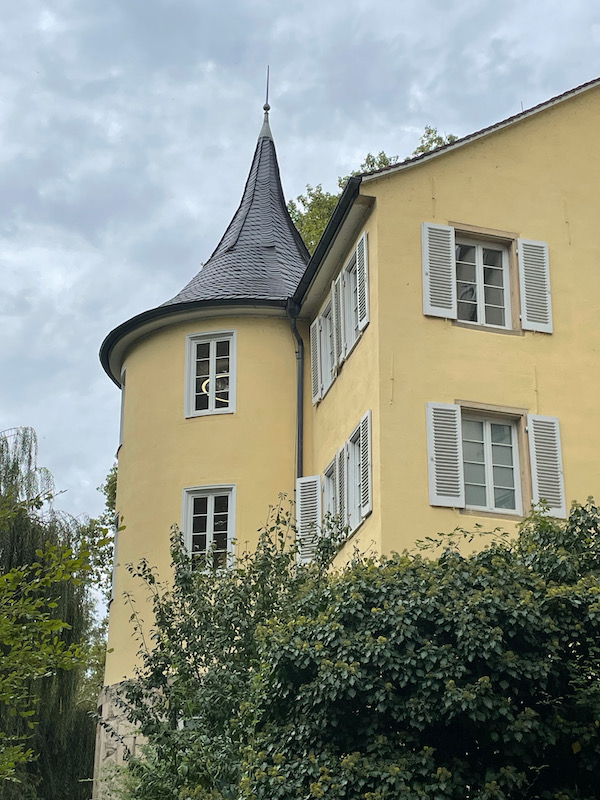
In various spots, you can see parts of the old city walls here and there.
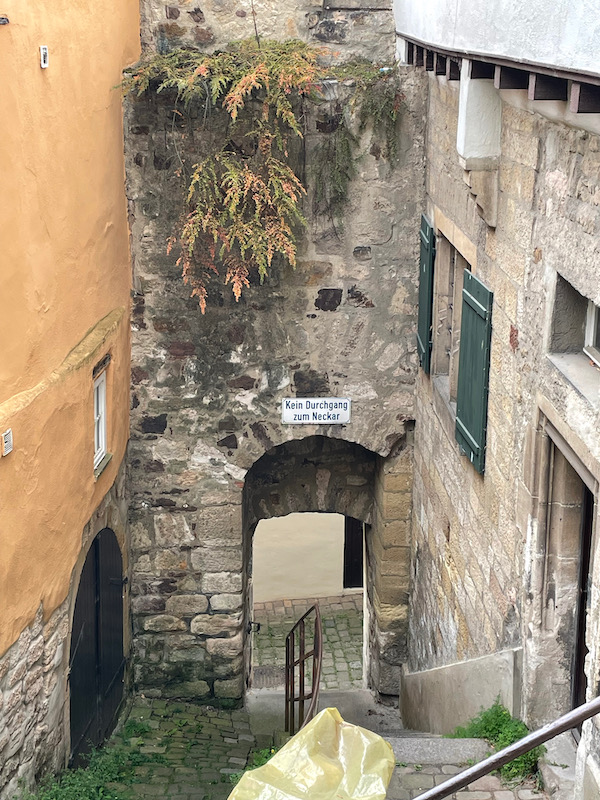
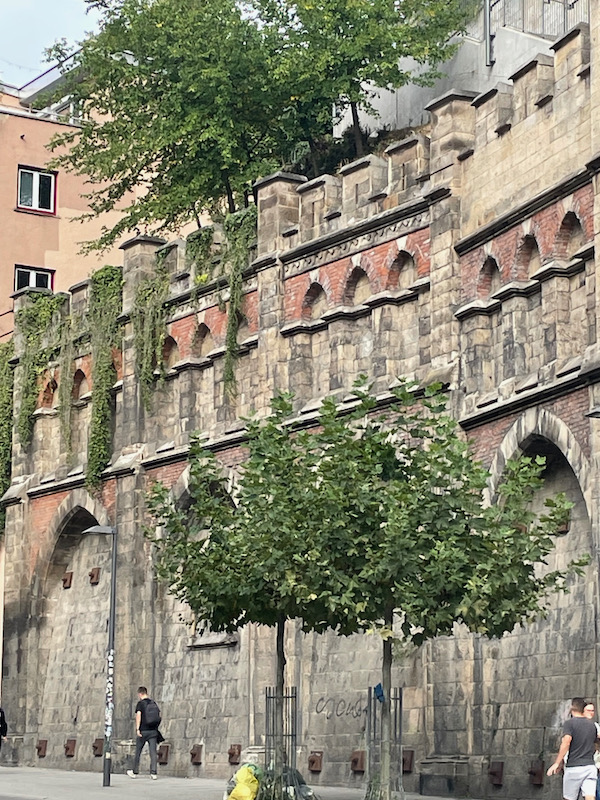
With the introduction of the Protestant Reformation in Württemberg in 1534, the monastery on this site was transformed into a Protestant Seminary. Room, board and education were free, a scholarship granted to the most talented boys of the area. One of the most famous graduates is the astronomer J. Kepler. Today the building still serves as study house for students of protestant theology, now with a majority of female students (the first ones being admitted only in 1969).
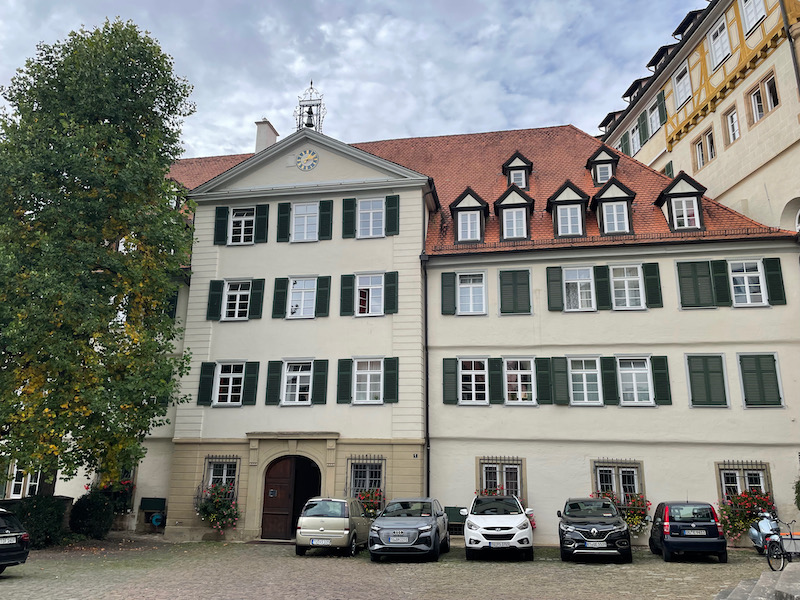
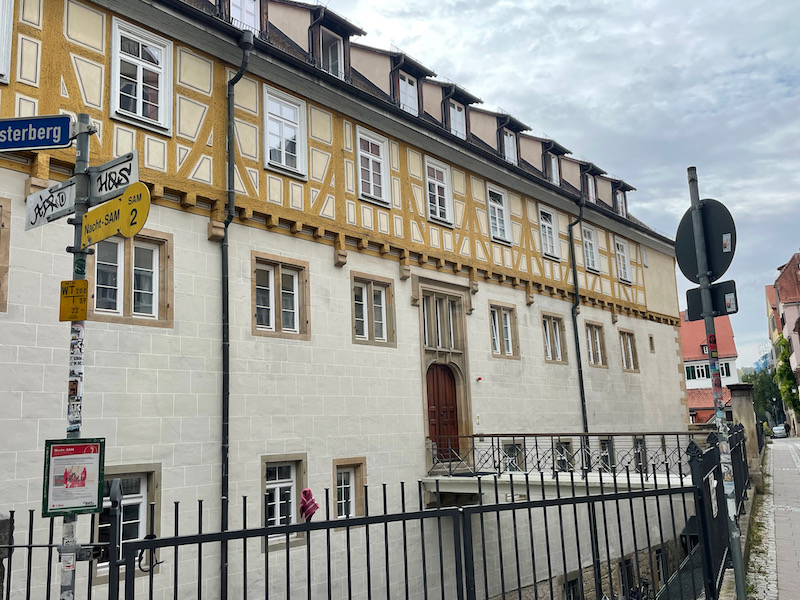
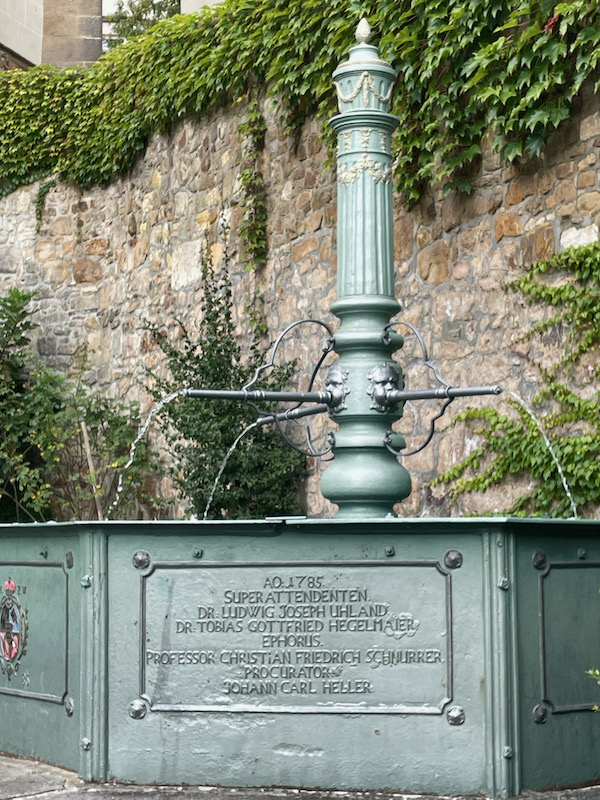
We walked up a steep, cobblestone lane to reach a Roman-looking triumphal arch, which is the lower castle gate. It is considered to be one of the finest examples of Renaissance architecture in the region, and was built in 1608. Over the door is the coat of arms of the Duchy of Württemberg surrounded by the saying (in French) "Honi soit qui mal y pense" (Shame on anyone who thinks badly of it).
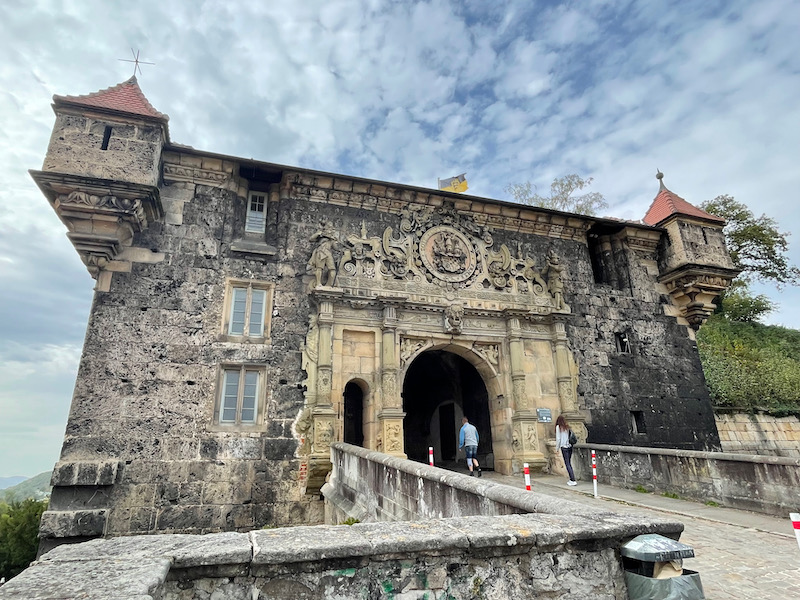
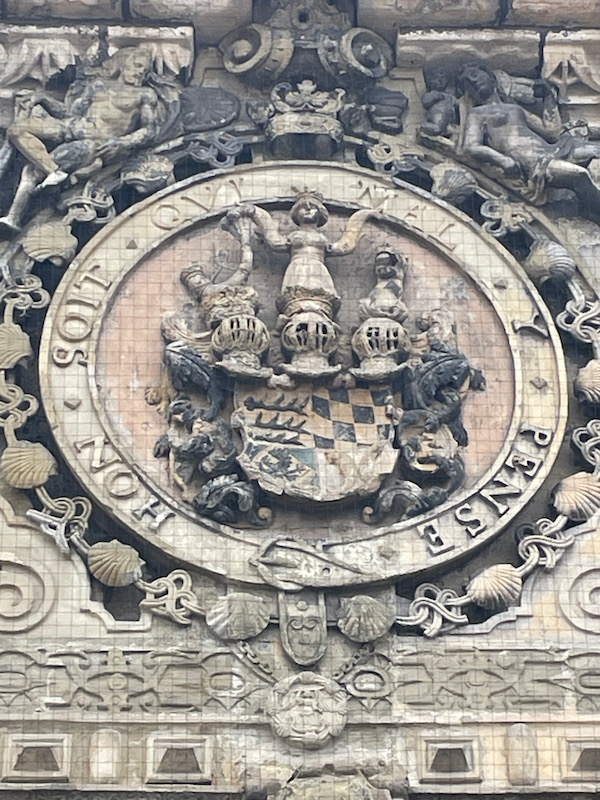
Then up to the Hohentübingen Castle, one of seven fortresses that were built in Württemberg in mid 16th century. Inside yet another nice gateway, it has the typical form of a 4-winged building around a courtyard with inside gallery. A bit of trivia: in 1869, Friedrich Miescher from Basil isolated an acidic substance from the nuclei of human cells in the former kitchen of the castle. That substance, called "Nuklein" contains DNA that is now known to be the carrier of genetic information and is part of the foundation of molecular biology.
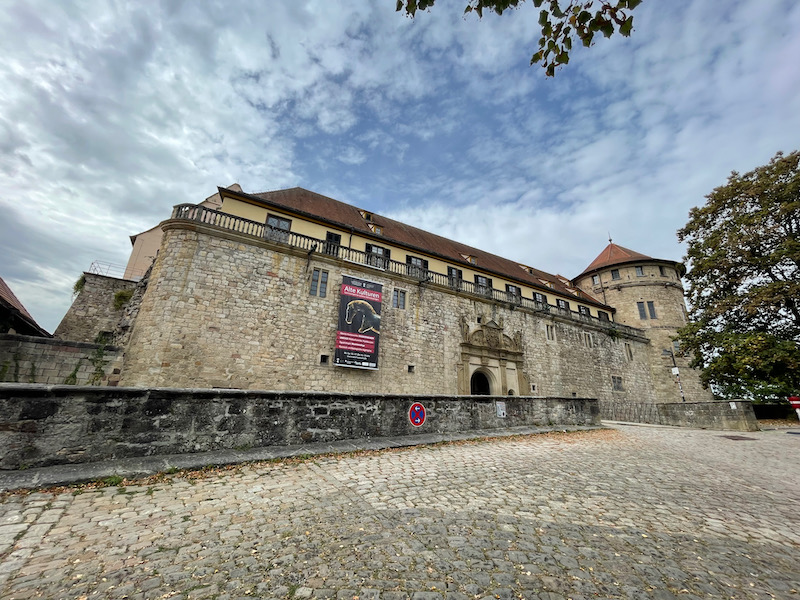
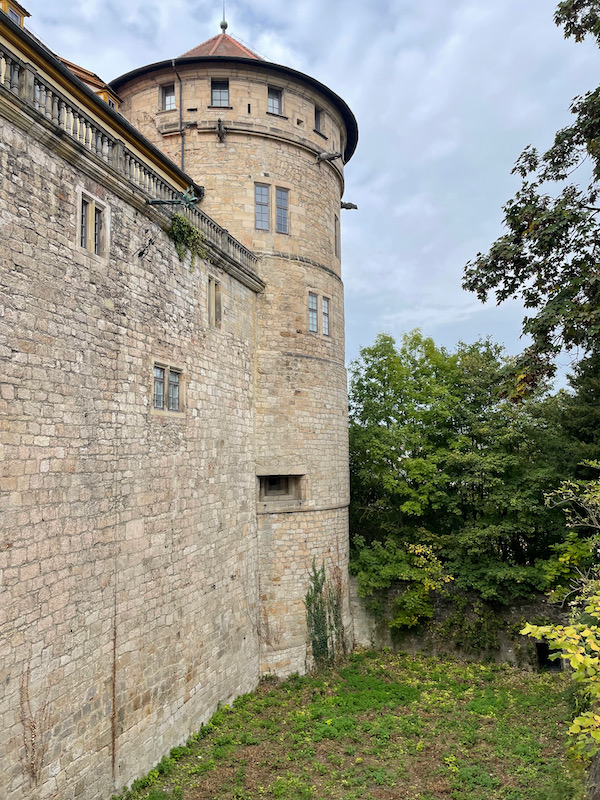
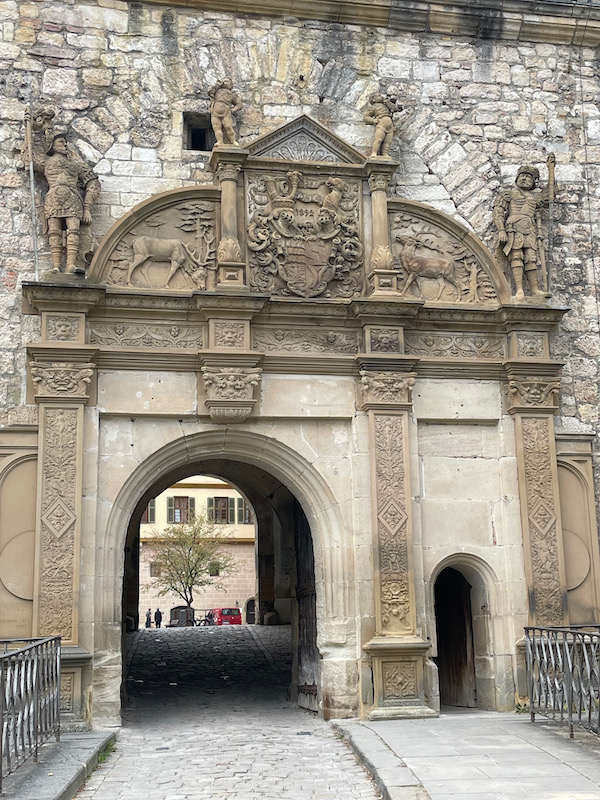
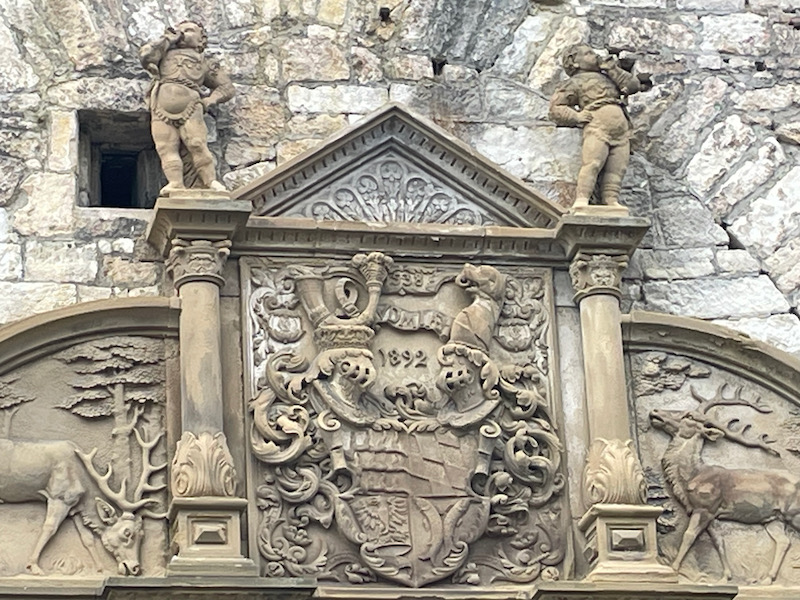
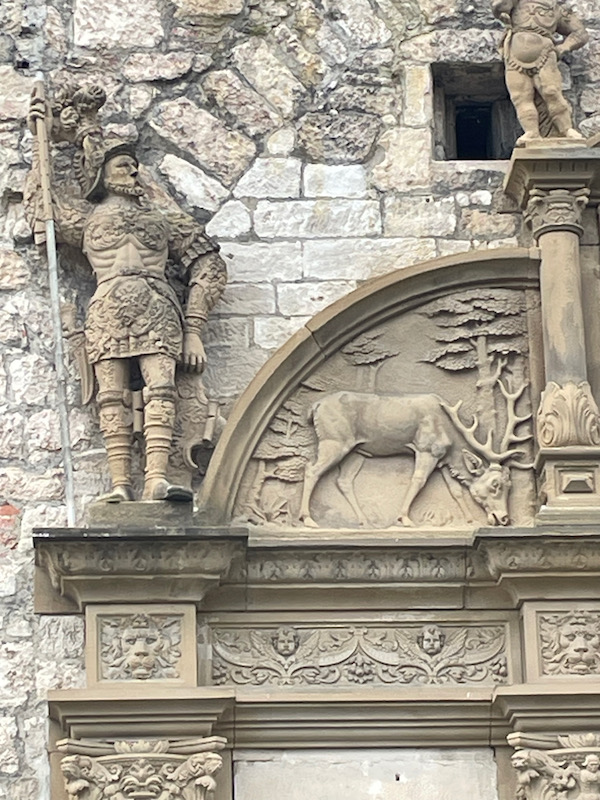
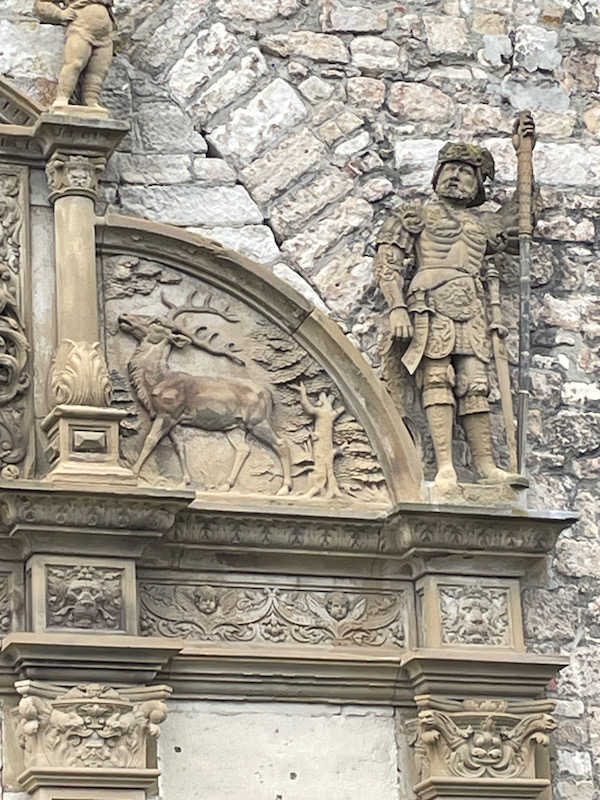
This has been part of the University since the late 18th century. I'm not sure I could imagine taking classes in this building!
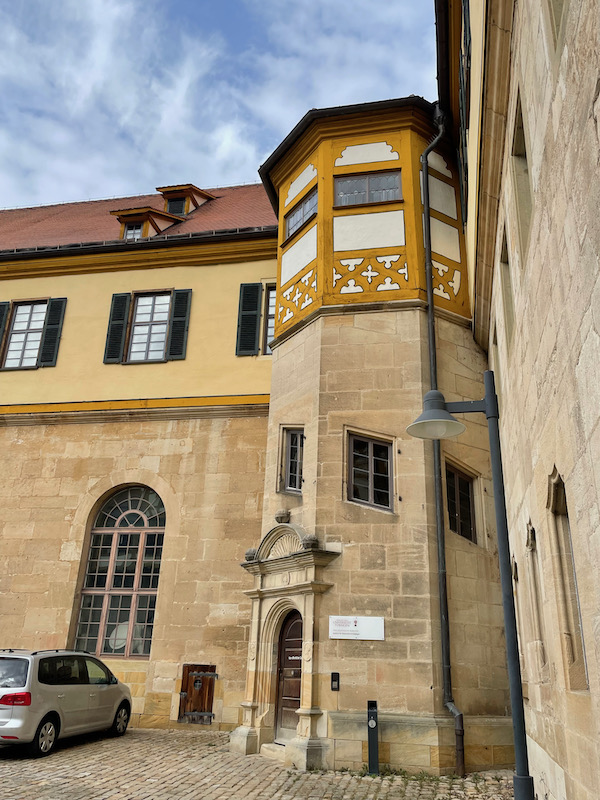
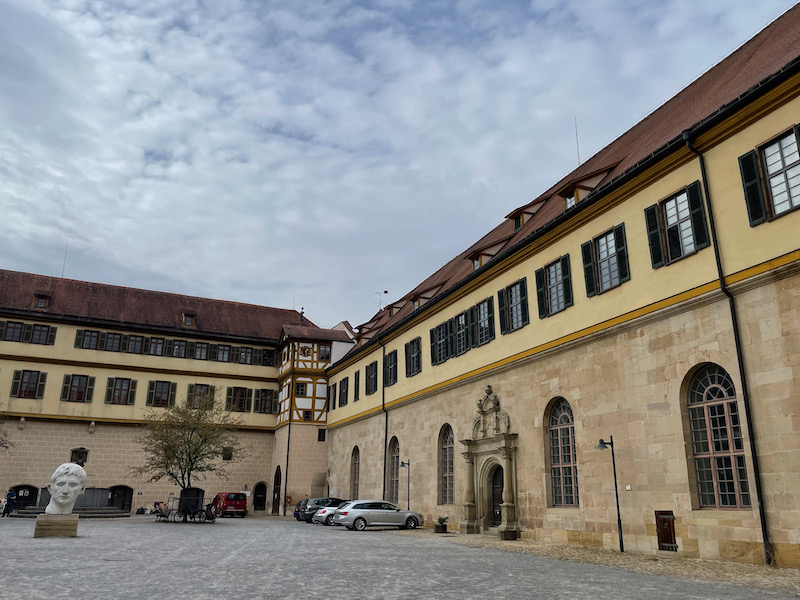
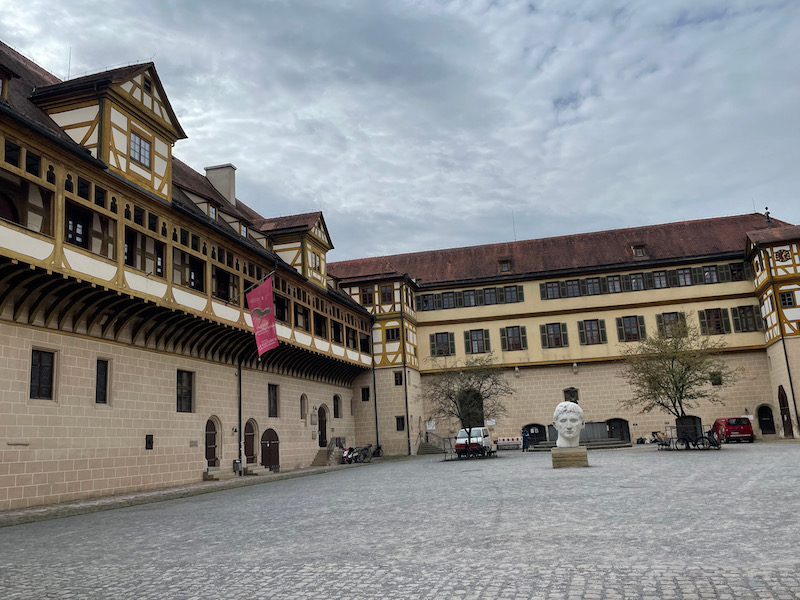
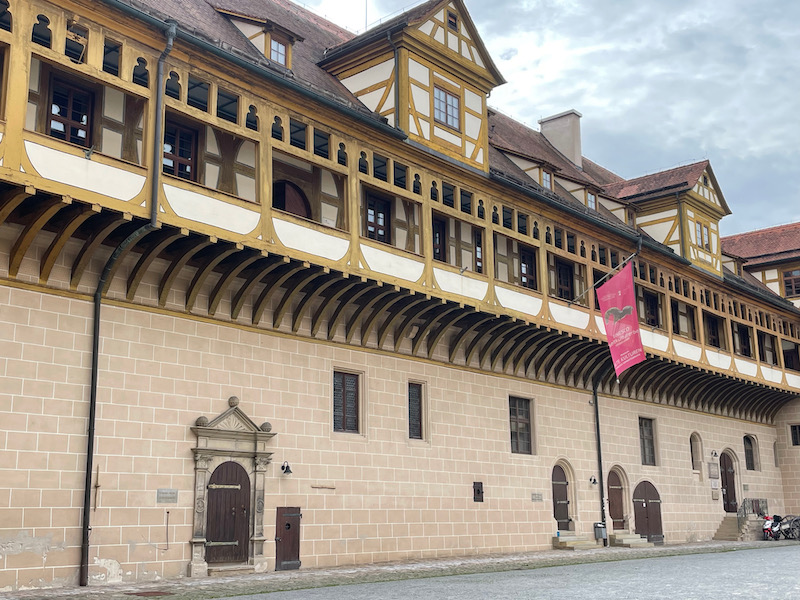
Within the old town, there are lots of nice half-timbered houses.
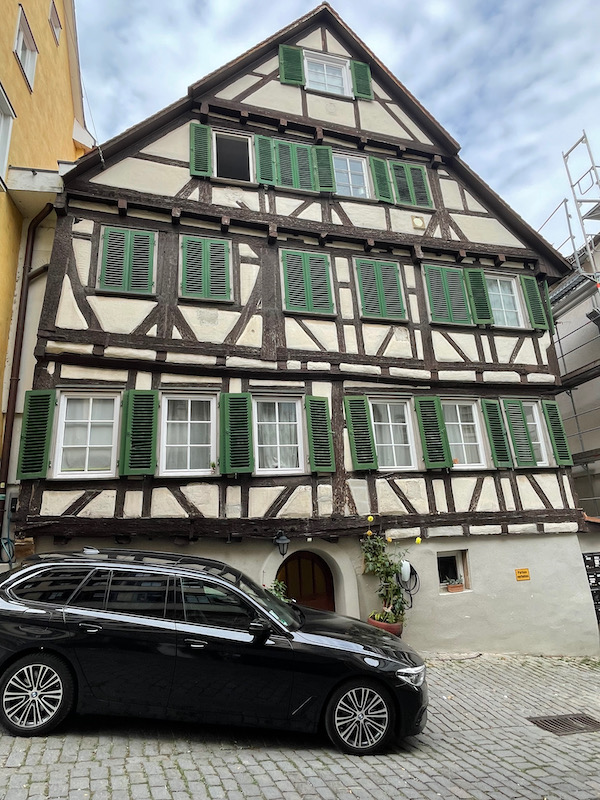
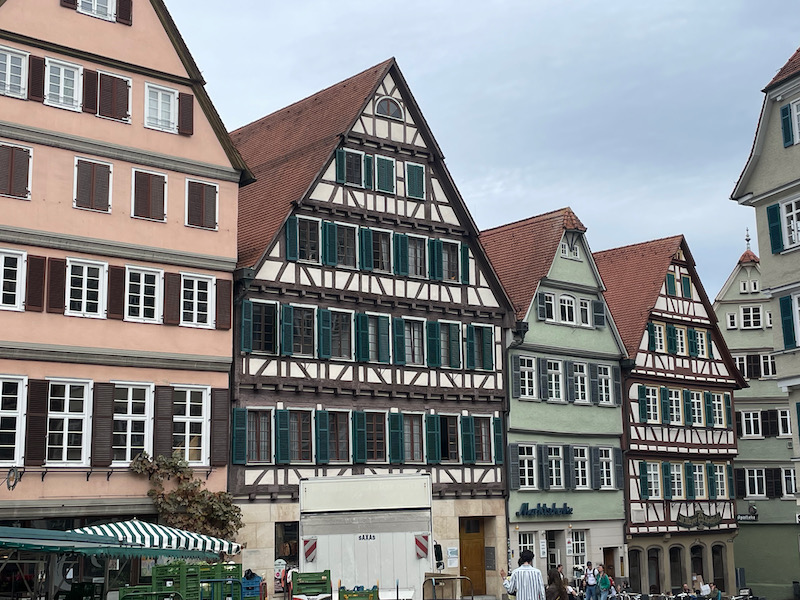
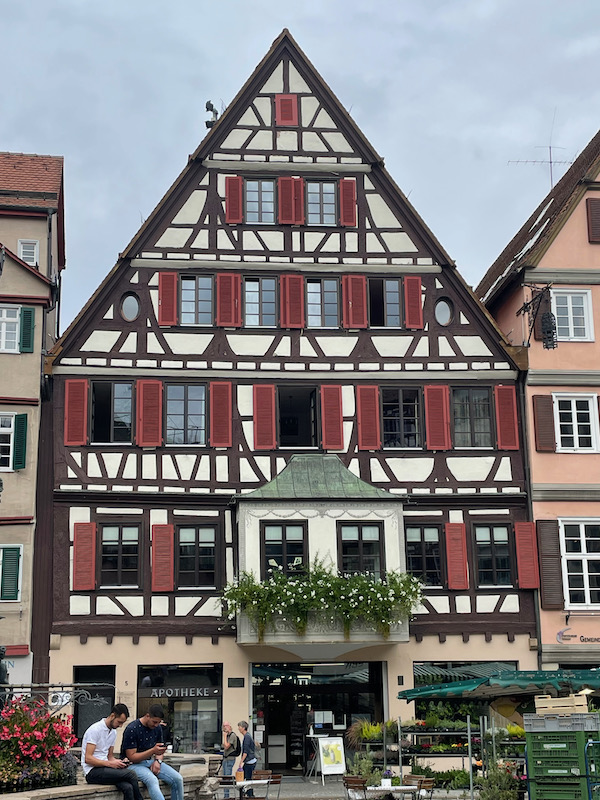
The City Hall was built in 1435, with a very colorful façade dating back to 1876. It shows the coat of arms of Tübingen on the right hand side of the clock in the gable. Above it, an Astronomic clock from 1511. Below, the picture of Eberhard "the Bearded", the founder of the University. The Neptune fountain dates back to 1617 and was originally made of stone.
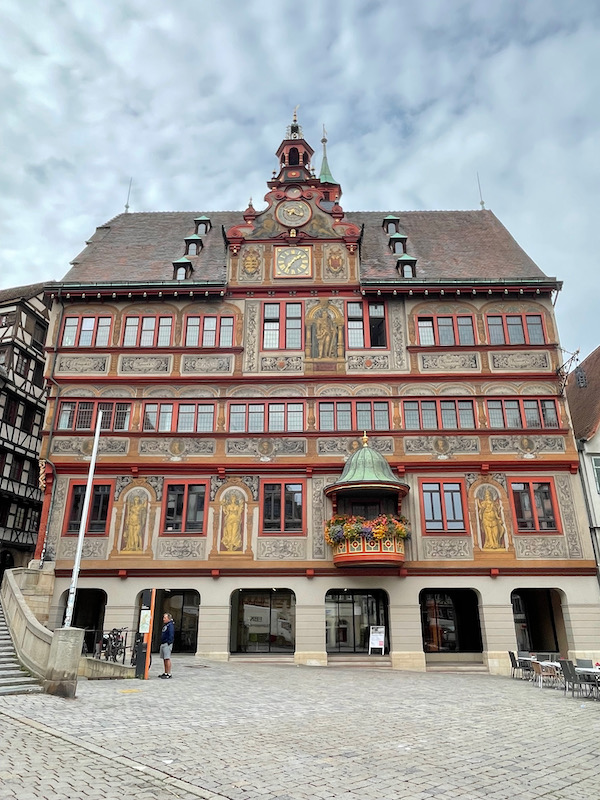
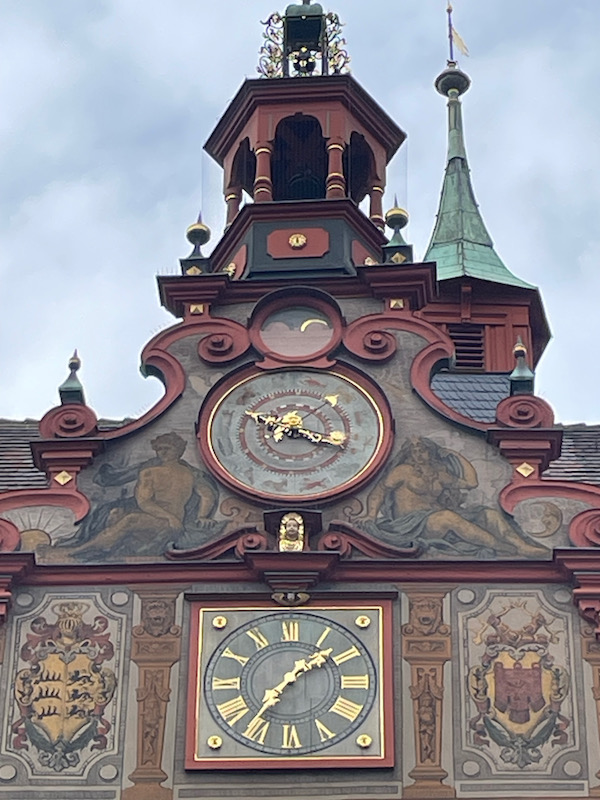
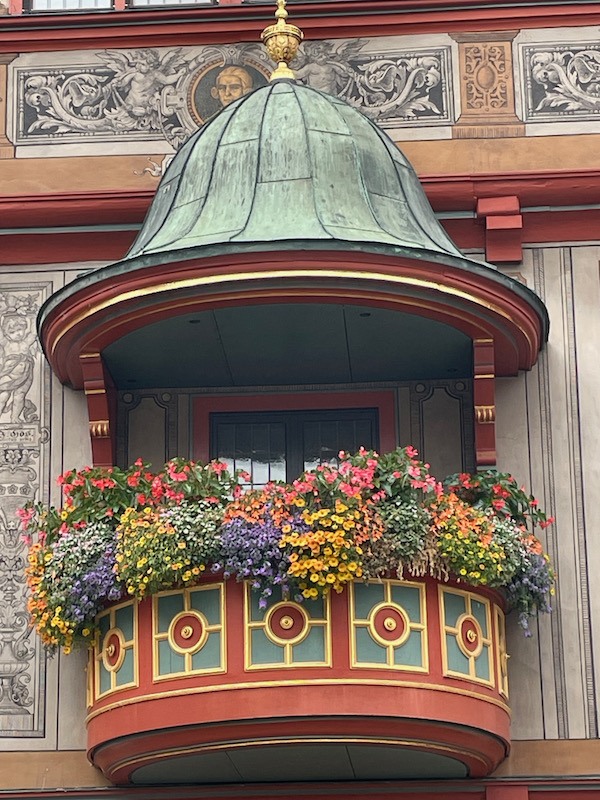
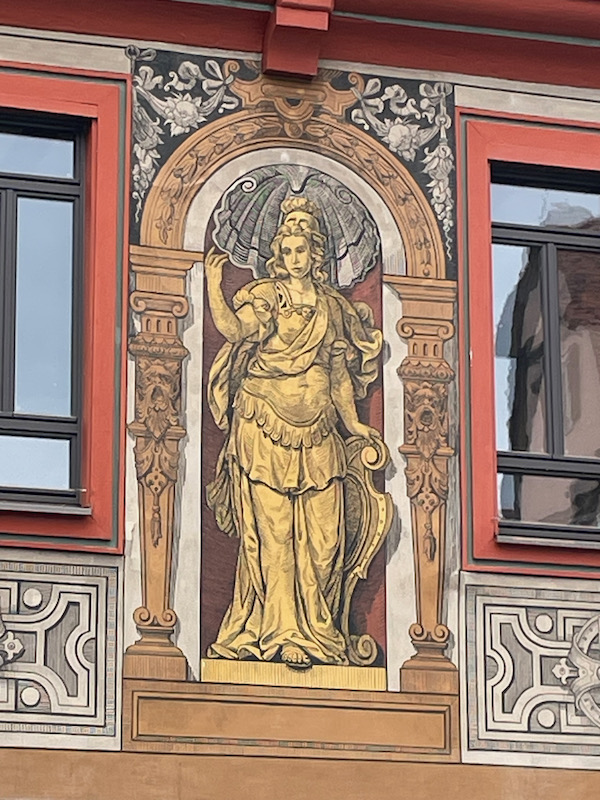
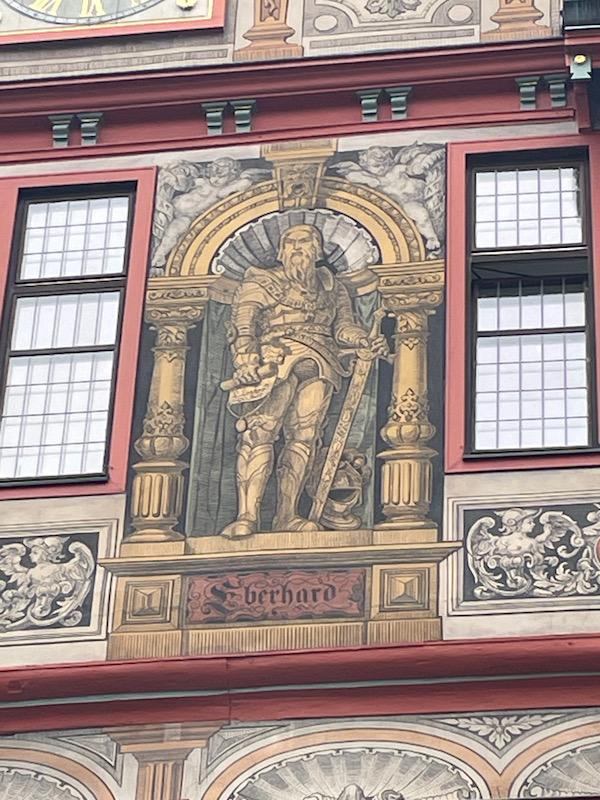
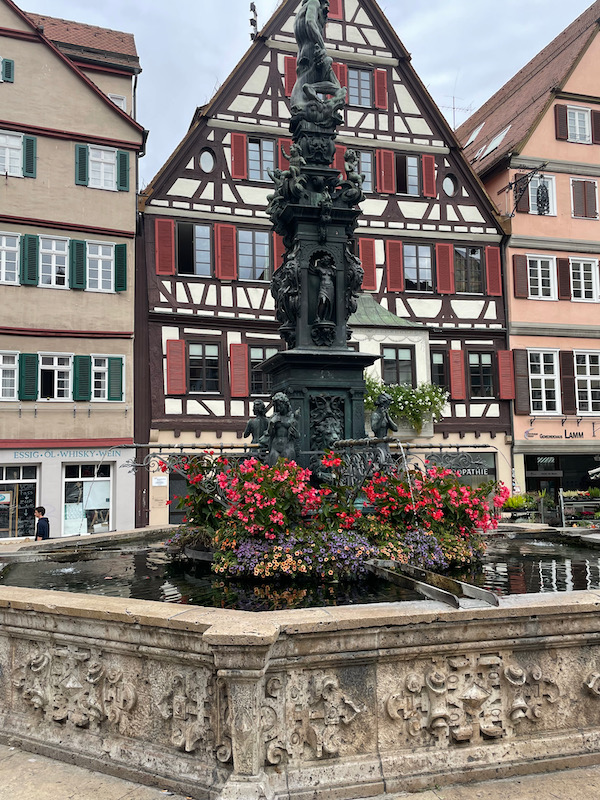
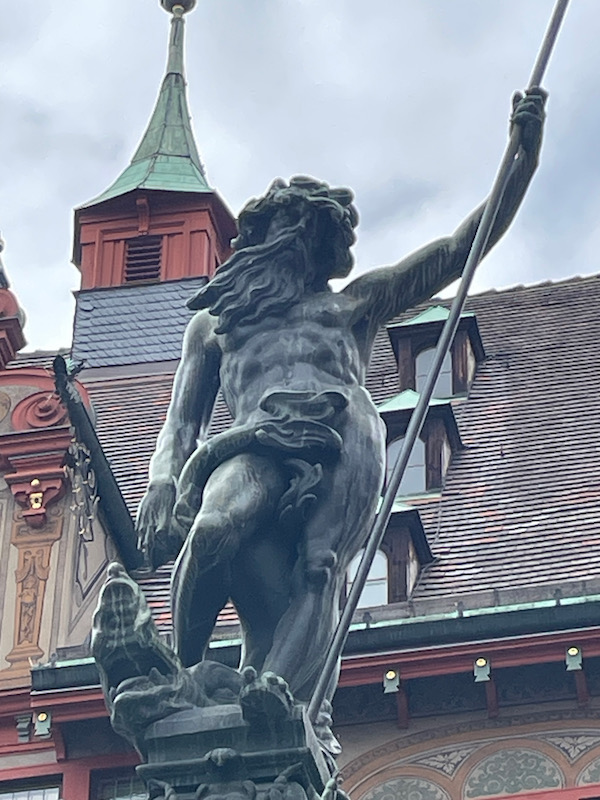
Built in the 1450s, and later enlarged, the former Grain Market building now houses the Museum of History for the town. The difference between two kinds of half timber technique used in this region can clearly be seen in the first story (1453) and second story (added in 1607).
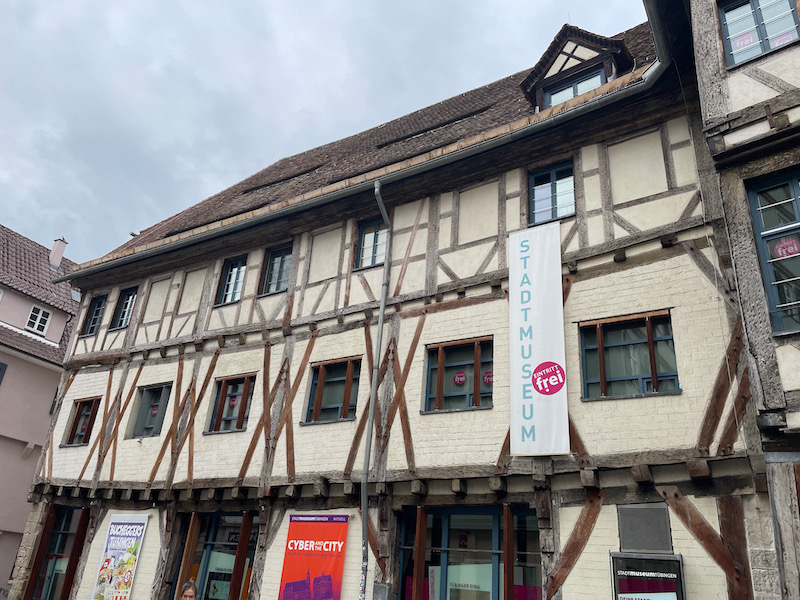
We then made a stop at Krumme Brücke Square (which means Crooked Bridge square). The bridge here, over the Ammer canal, was the informal line between the Upper Town (for the wealthy) and the Lower Town, the quarter of the artisans, farmers and winegrowers. With workshops, stables, and manure heaps, you can imagine that this wasn't the best part of town. It has been somewhat gentrified, and we stopped for coffee that was very serious about it's coffee bean roasting!
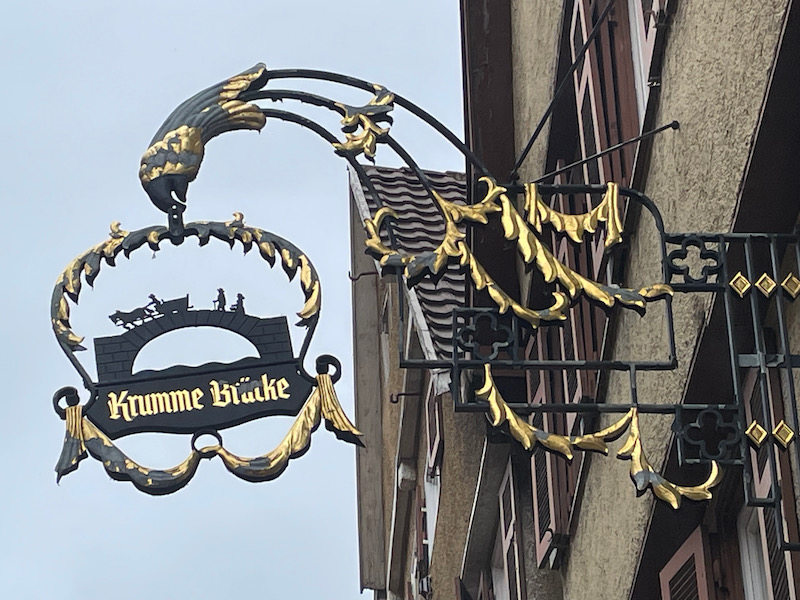
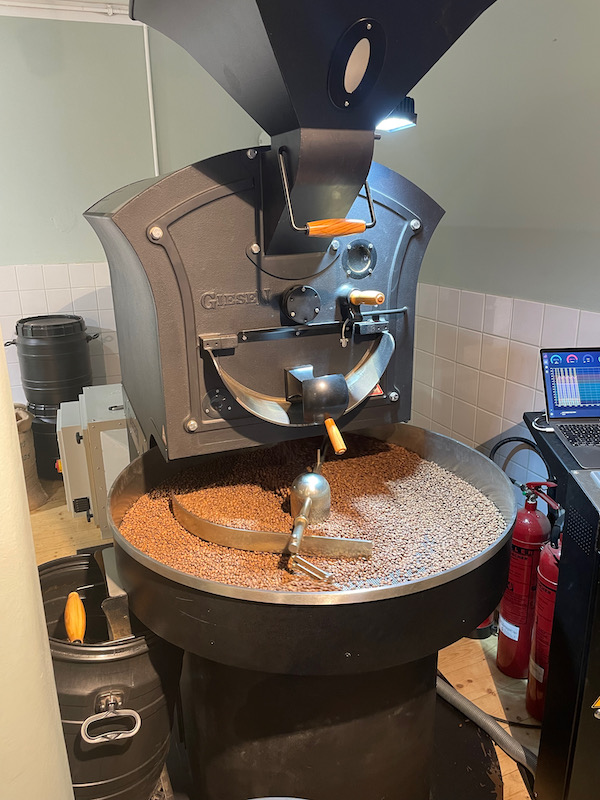
St. James Church started as a small Romanesque church dedicated to the patron saint of pilgrims and was the parish church for the winegrowers and artisans of this formerly poor quarter of town. The church was extended in 1500 using Gothic style.
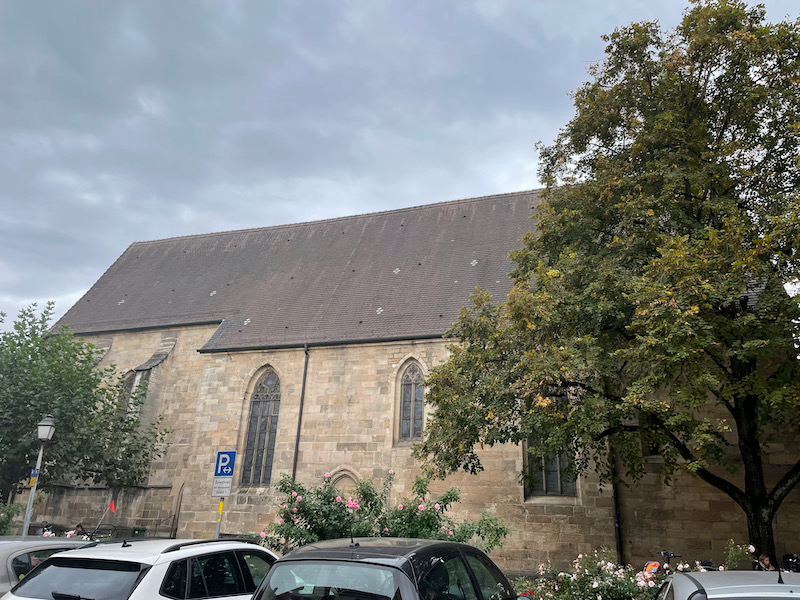
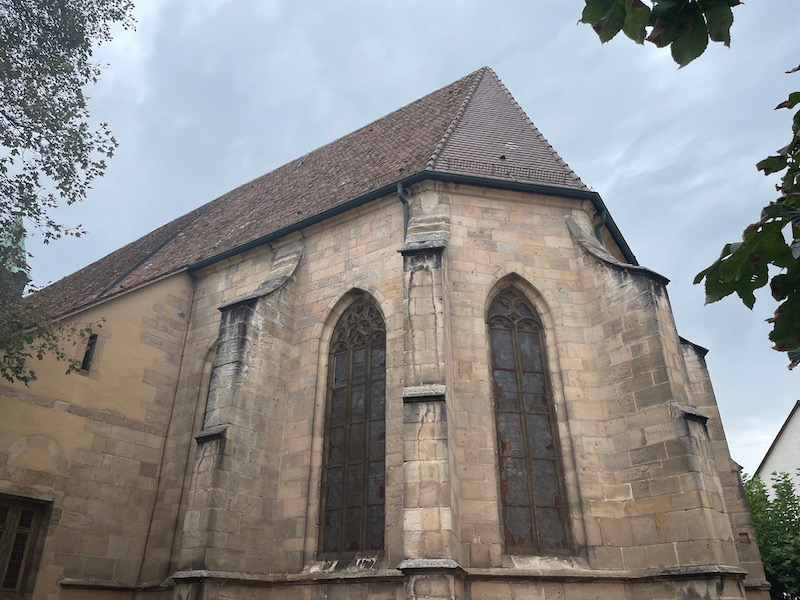
The inside is quite bizarre for me. From the outside, I would have never guessed that the nave was a rectangle with a flat, wooden-beamed ceiling. This Renaissance-style ceiling comes from a renovation in 1624.
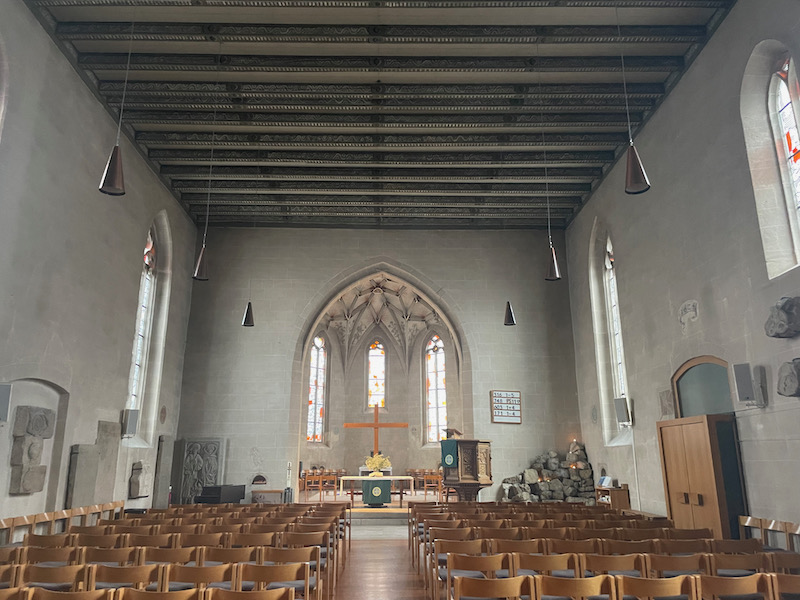
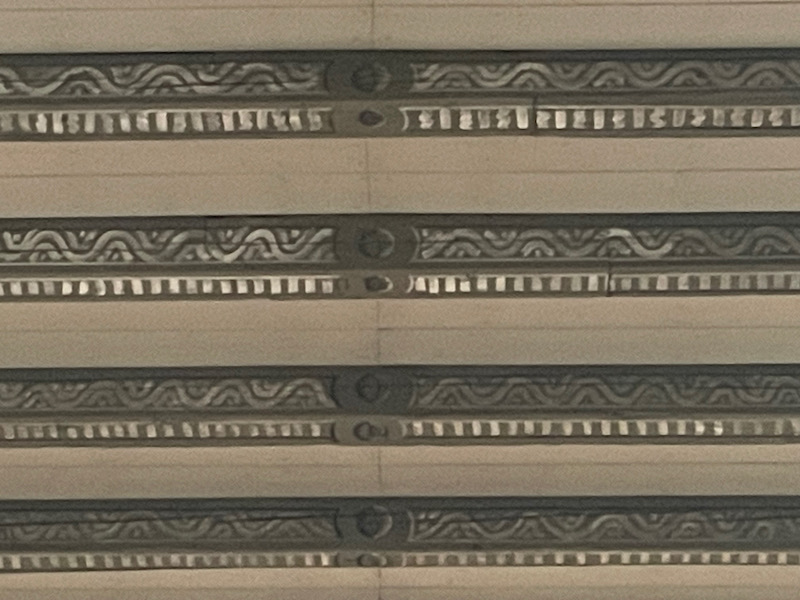
Along the wall are several grave stones that were either brought from outside or taken from the floor of the church and placed on the walls during another renovation in 1975.
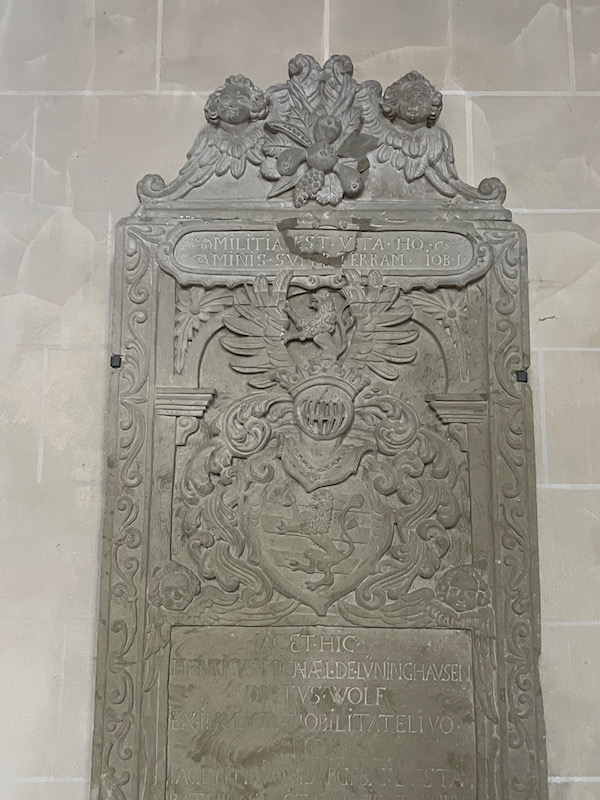
The choir looks totally different from the nave, with the very intricately-painted ceiling ribs.
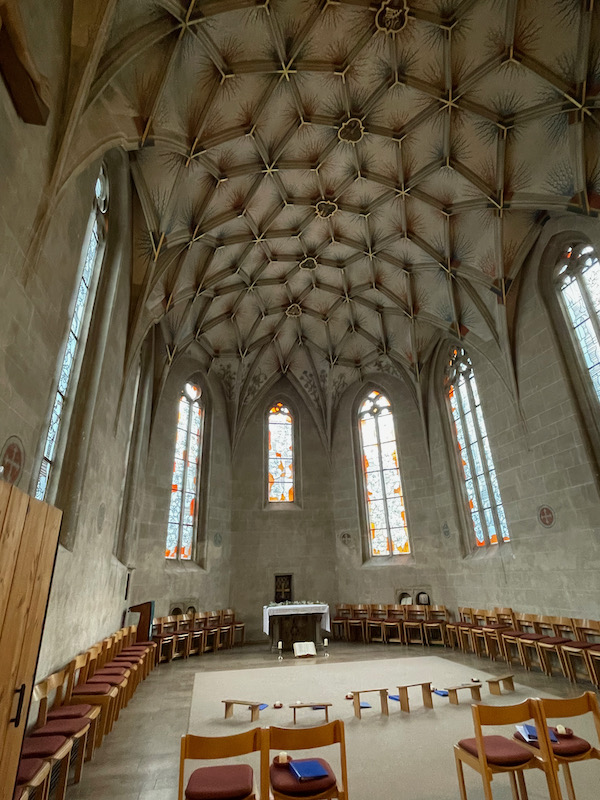
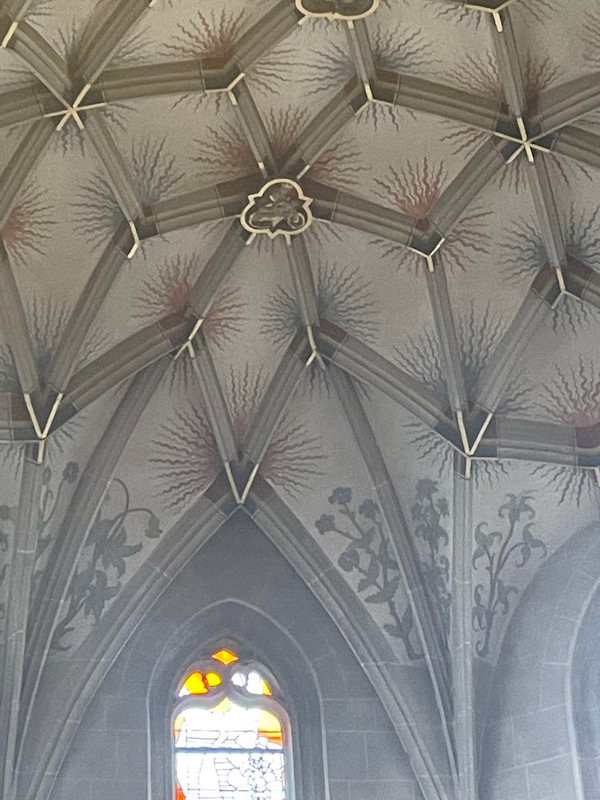
This towering building, called The Duke’s Barn, was built shortly before the University was founded. Carbon dating suggests the years 1474-1475 for many of the massive oak beams. Huge wine presses used to be in the ground floor hall, the other floors serving as a granary.
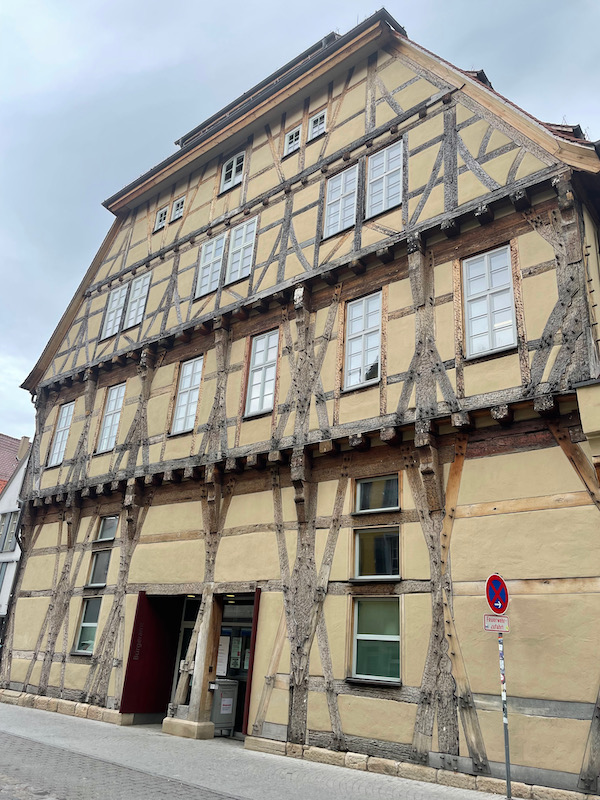
First mentioned in 1191 as St.George Parish Church, the current Collegiate Church dates back to the foundation of the University, the late 15th century. It is a prime example of the late gothic Swabian hall church.
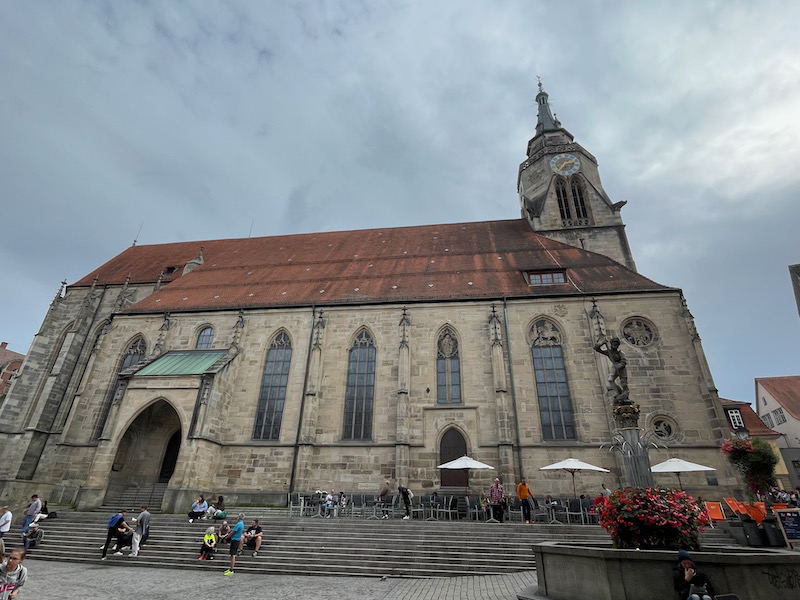
Inside is a more typical plan, with the nave and two side aisles, separated by Gothic arches. The pulpit is also in late Gothic style. The choir stalls were not an intricately-carved as some we have seen, but they did have these big wooden sculptures on top.
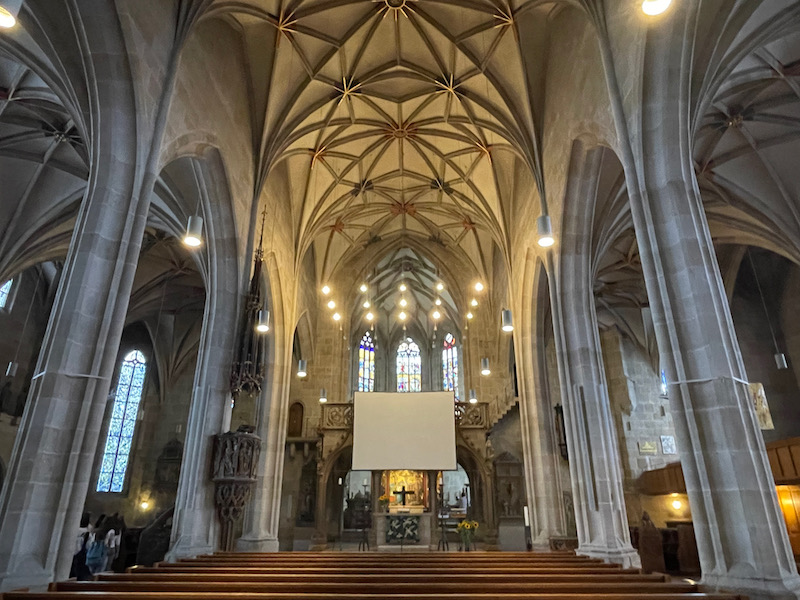
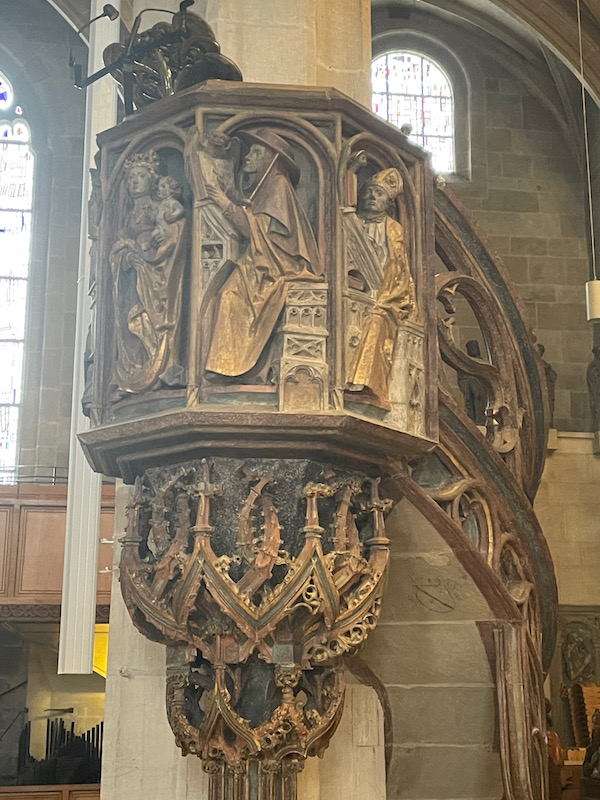
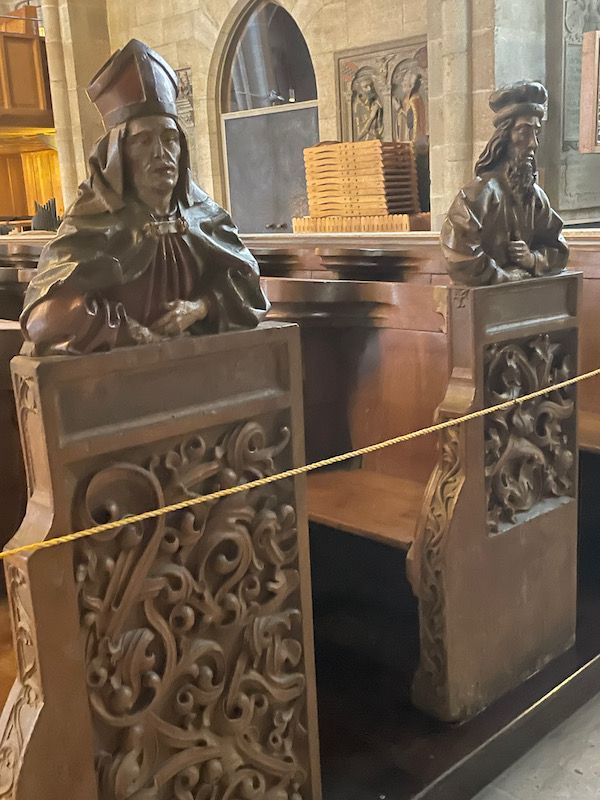
In front of the apse is this chancel screen.

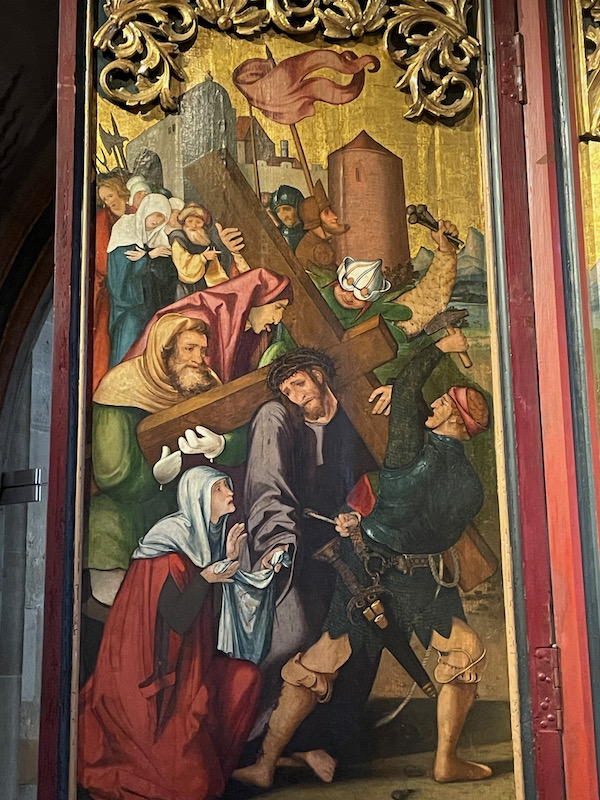
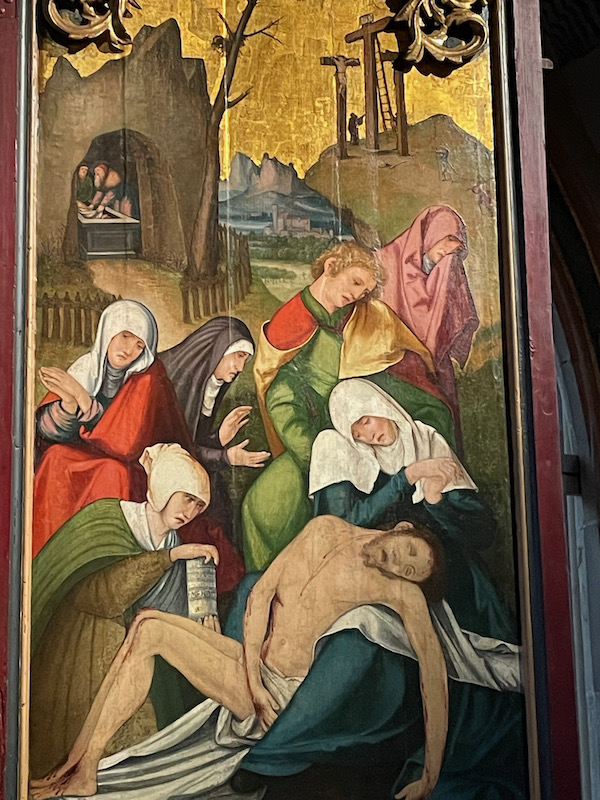
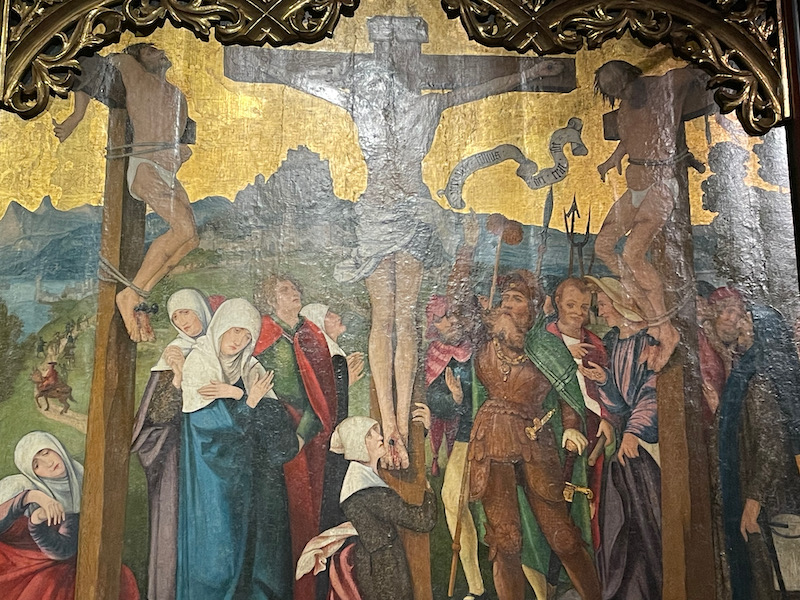
The choir itself was blocked by plexiglass, but I attempted to get pictures. The stained-glass windows date back to 1476-1479 and you can also see the sculptured tombs of the Dukes of Württemberg.
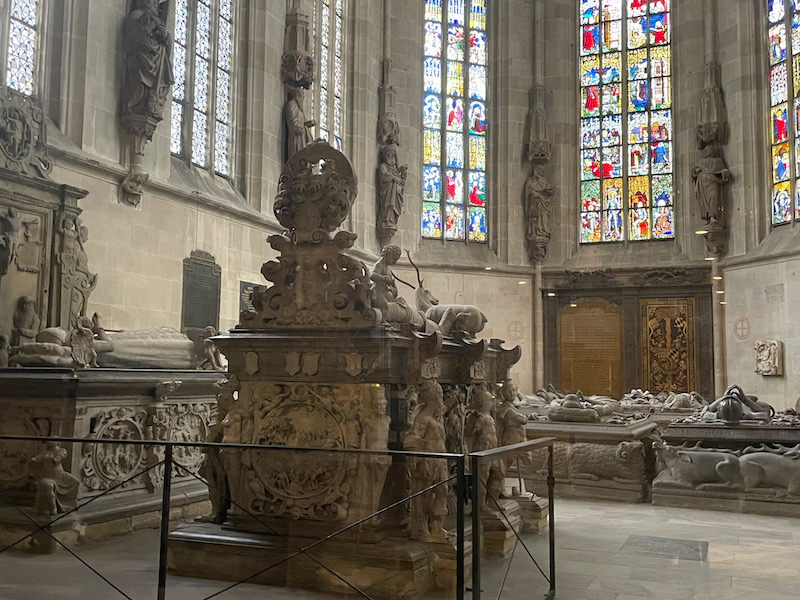
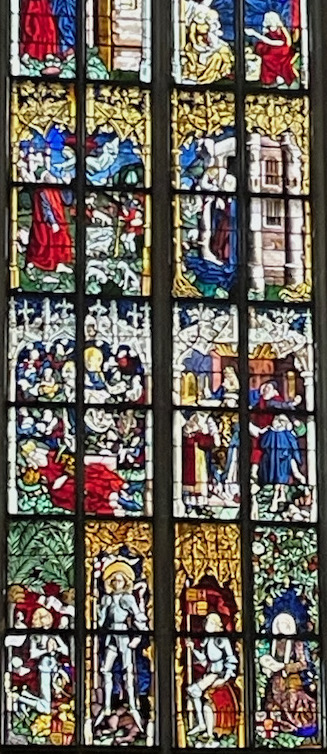
A few other random pictures near the entrance, where they have these highly decorated "things" .. not quite sure what they were, attached to the walls.
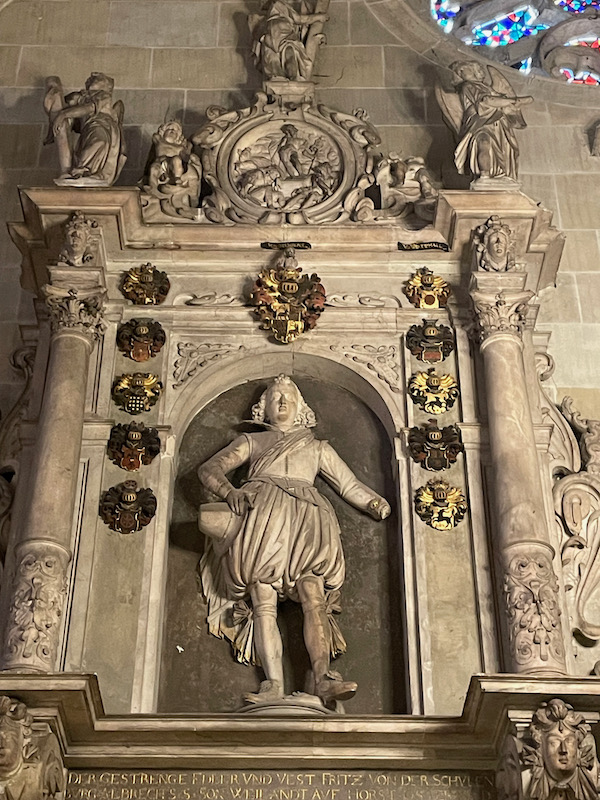
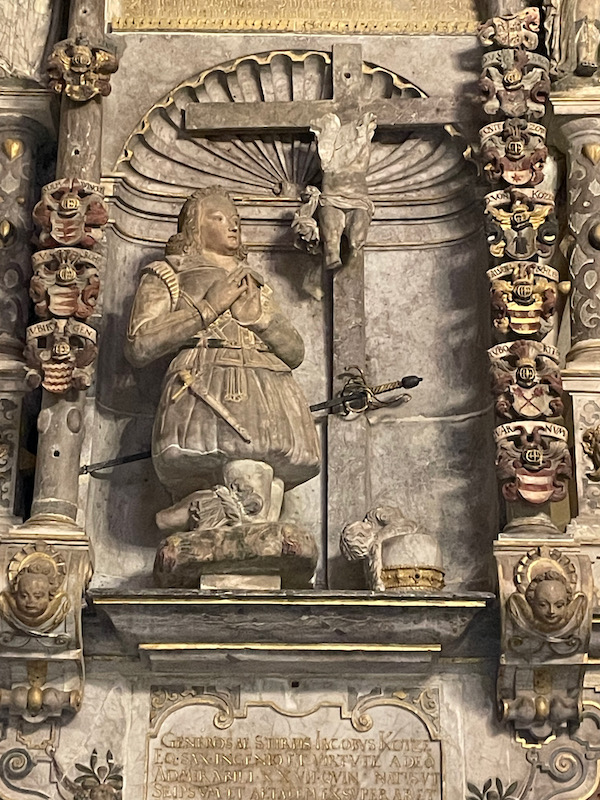
I just thought this house was really nice, at #2 Neckargasse, dating back to 1584.
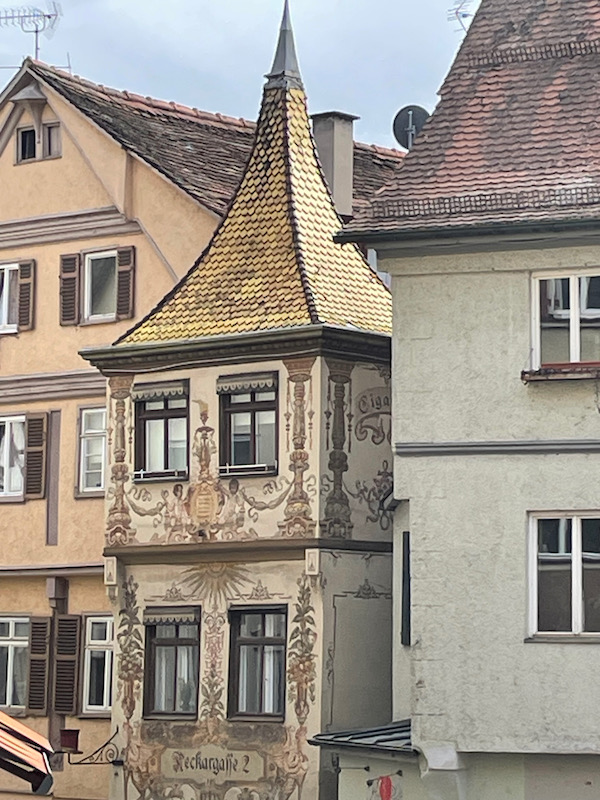
Stocherkahnfahrten, also known as punt boat rides, are an integral part of Tübinger culture. You can rent one of these and take a trip on the river, with the "punter" propelling the boat forward by pushing against the riverbed with a pole. We didn't try it but we did grab a picture of a group of girls taking their Stocherkahnfahrten.
